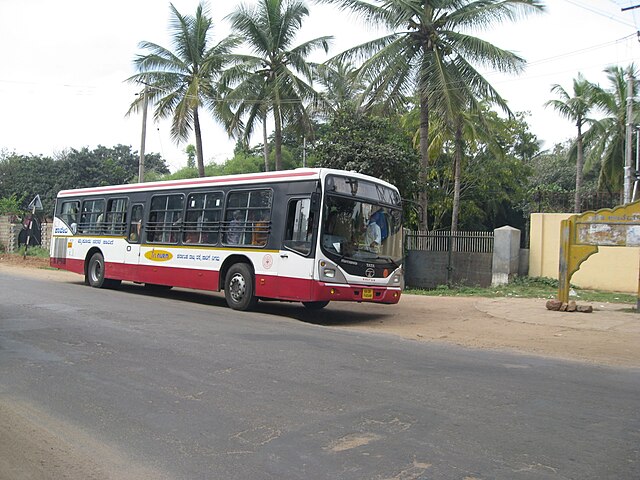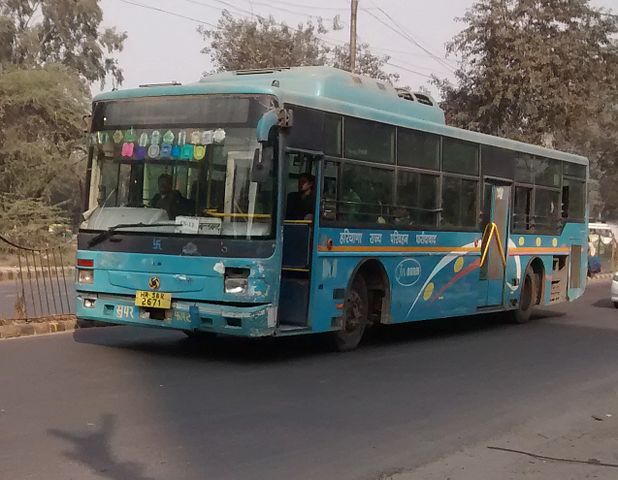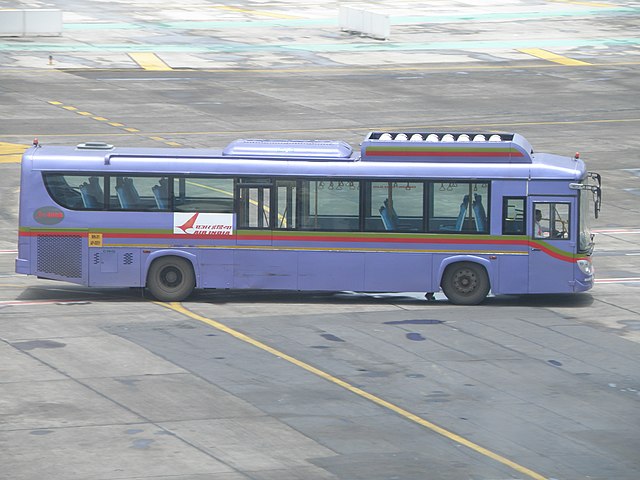With the impending opening up of the Vandalur Kilambakkam Bus Terminus in southern Chennai, one fear among many of the city’s residents is not going away. The Chennai Metropolitan Development Authority (CMDA) has proposed to shut down the Chennai Mofussil Bus Terminus (CMBT) (also known as Puratchi Thalaivar Dr MGR Bus Terminus or MGR Koyambedu) permanently.
A little background
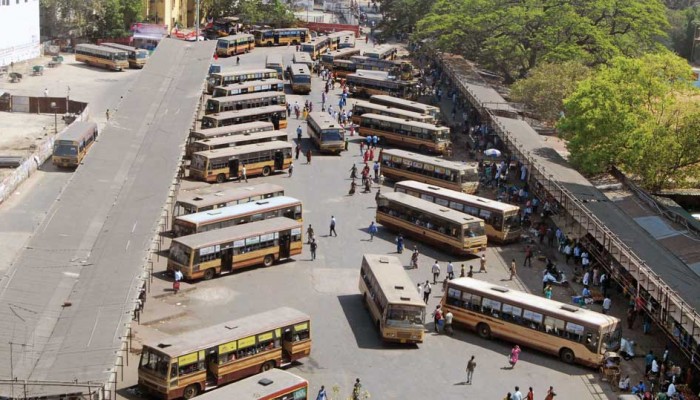
Opened in 2002, CMBT is a 37-acre bus station that serves as Chennai’s primary terminus for mofussil and long distance buses operated by various government agencies. It is owned by the CMDA and operated jointly by the six divisions of the Tamil Nadu State Transport Corporation (TNSTC), namely TNSTC Villupuram, TNSTC Coimbatore, TNSTC Salem, TNSTC Kumbakonam, TNSTC Tirunelveli and TNSTC Madurai. The remaining two arms of the TNSTC, the Metropolitan Transport Corporation (MTC) and the State Express Transport Corporation (SETC) also play a role in the daily operations.
Prior to 2002, Chennai had no dedicated bus station for long-distance buses. Few SETC buses usually operated out of one half of the Broadway bus terminus. Other SETC and nearby states’ buses would operate out of a vacant plot of land opposite Chennai Fort railway station, which today houses the Government Dental College and Hospital while private buses would operate from the Gandhi-Irvin Bridge Road near Chennai Egmore railway station on the banks of the Cooum river.
In the late 1990s, the wholesale market located at Kothawal Chavadi was moved to a 295 acre plot in Koyambedu. After this, the entire operations of all government buses was shifted to the new bus terminus at CMBT. A separate 6.7 acre bus station was built across the road, adjacent to the whole market. Named the Chennai Contract Carriage Bus Terminus (CCCBT), it handles between 350 to 450 private buses and 5,000 passengers a day.
Till 2018, CMBT was the hub for all TNSTC and SETC buses, as well as buses operated by the RTCs of Puducherry (PRTC), Karnataka (KSRTC), Kerala (also KSRTC), Andhra Pradesh (APSRTC), and Telangana (TSRTC). In 2018, TNSTC buses bound for Telangana and Andhra Pradesh, as well as APSRTC and TSRTC buses were shifted out to Madhavaram Mofussil Bus Terminus (MMBT).
Madhavaram has its problems
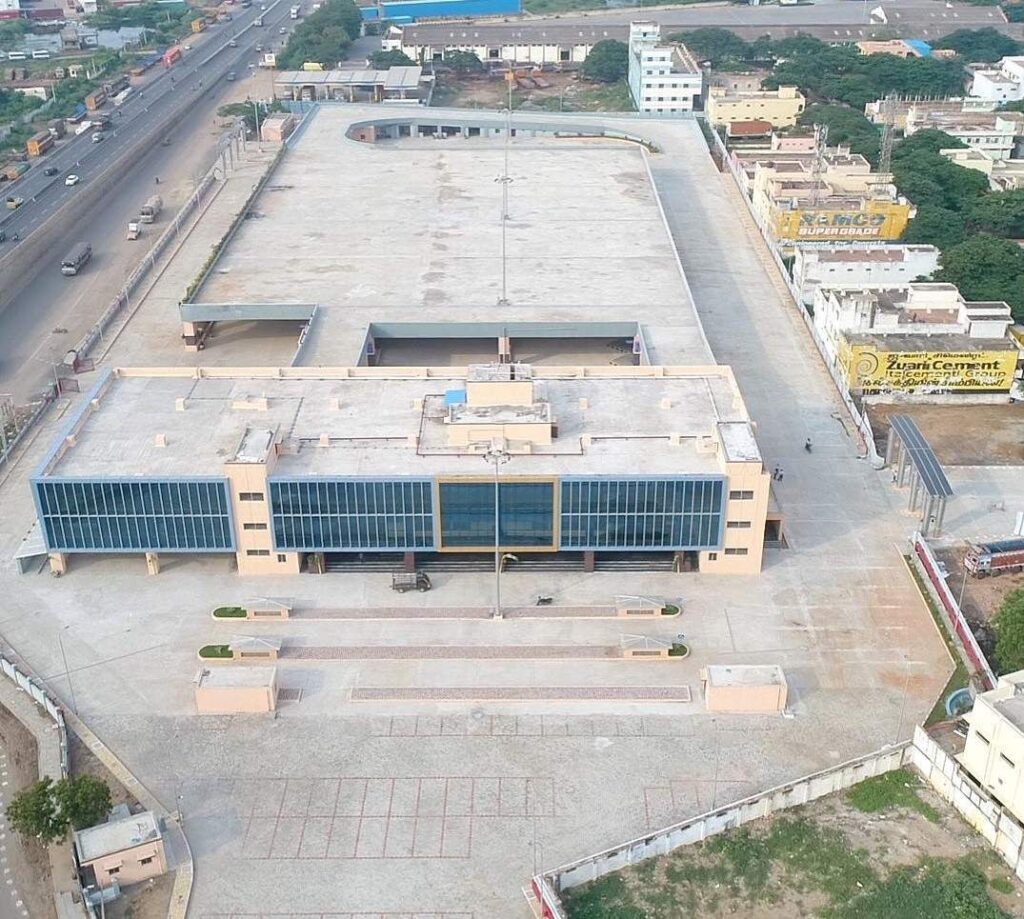
MMBT is an 8 acre, two-level bus terminus located at Madhavaram, adjacent to CMDA’s truck terminal, at the intersection of Grand Northern Trunk Road (GNT Road) that forms National Highway 16 (formerly NH5) and Inner Ring Road (IRR/State Highway 2). While it does feature two platforms for MTC buses, it otherwise lacks good connectivity. There are a few buses that connect it to CMBT and a lot of buses that connect it to Broadway or Vallalar Nagar (V Nagar/Mint Street). Passengers arriving from CMBT have to cross the road at the roundabout which witnesses heavy truck traffic. While MMBT and CMBT are located barely 10km apart, it can take up to 30-40 minutes to reach there.
Around 315 buses use the terminus daily, catering to an average of 12,000 passengers, with a higher number over the weekends. While TNSTC and APSRTC operate numerous services to Andhra Pradesh, TSRTC operates one Volvo service to Hyderabad. APSRTC operates several buses to Vijayawada. There are no buses to Visakhapatnam or Yanam and SETC doesn’t operate a single bus into either Telugu-speaking state. In fact the destination with the highest number of SETC routes apart from Chennai is Bangalore.
MMBT can handle 42 buses on the ground level and another 50 from the upper level. However, only government buses currently operate from MMBT while private buses continue to operate from CCCBT. This puts the former, especially APSRTC buses at a major disadvantage. Interestingly, some of TNSTC’s buses bound to Tirupati start from CMBT, which also gives it an unfair advantage over its Andhra Pradesh counterpart.
Connectivity to Madhavaram will eventually improve drastically. The under-construction lines 3 and 5 of the Chennai Metro both start at Madhavaram Milk Colony, located to the northeast of MMBT with Line 5 have a station outside MMBT. It will further continue on IRR and meet the Green Line at Koyambedu (not CMBT) and then at Alandur before meeting the MRTS at St Thomas Mount/Parangimalai. While the Chennai Metro Rail Limited (CMRL) expects all three lines of Phase 2 to be completed by 2025, our friend TheMetroRailGuy estimates it to be completed no sooner than 2028.
Now coming to Vandalur Kilambakkam
While CMBT is currently Asia’s largest bus terminus at 37 acres, it will be soon dwarfed by the Vandalur Kilambakkam bus terminus that is spread across a whopping 88.5 acres. A timely reminder here that Delhi’s Millenium Park is not a bus station but a depot and therefore not Asia’s largest bus station.
With a total built-up area of 6.4 lakh square feet, it will feature 215 bus bays of which 130 will be for government buses and 85 will serve private buses. It will also have parking space for 300 buses, 275 cars and over 3,500 two-wheelers. An MTC terminal is being built adjacent to it, spread over 7.4 acres, nearly the area of MMBT. Interestingly the entire bus terminus lies within a protected and prohibited zone of the Archeological Survey of India (ASI) as it contains Megalith Burial Sites. The National Monument Authority (NMA) gave a green signal so long as no commercial development took place for 100m in the region except for greenery and the CMDA installed the required signage.
By road, the distance between CMBT and Kilambakkam is exactly 30km if one were to take IRR till Kathipara and then continue onto Grand Southern Trunk Road (GST Road). The distance is the same if one were to go to Maduravoyal and take the Chennai Bypass till Irumbuliyur and then proceed along GST Road. Outer Ring Road (ORR) terminates on GST Road just north of the bus station. The nearest railway stations are Vandalur and Urapakkam on the Southern Line of the suburban railway, both of which are at least 10 minutes away. As for Metro, the nearest station is Chennai International Airport, located 16km away. After a long tussle between the Highways Department and CMRL, an extension of the Blue Line from Airport to Kilambakkam is on the map. The former wanted to build an elevated corridor on the route and the metro’s height will be decided accordingly. However, this will take several years to reach fruition and till then there will be heavy traffic. CMRL has also initiated feasibility studies to extend Line 3 (Madhavaram Milk Colony to Siruseri) to Kilambakkam via Kelambakkam (Get ready for more confusion). However this is light years away since the depot is at Madhavaram and most of the line runs underground and without a depot connection, nothing can happen.
One theory that I have heard is that private players would lobby the government to let them continue operating at CCCBT. This would put all TNSTC services at an unfair disadvantage and would hurt the poorer sections of society the most. Further, GST Road is the most congested highway in Chennai since it acts as a gateway to the entire south from Coimbatore to Madurai to Trichy to Tirunelveli and Nagarcoil. The time saved by buses in exiting the city will be lost in reaching the terminus. Auto and cab fares will end up costing the same as an intercity luxury bus ticket while bus journeys with luggage in MTC buses would be unbearable.
The worst hit would be commuters towards the West: Those heading to Vellore, Bangalore, Hosur, Krishnagiri, Dharmapuri and even Salem, Erode and Coimbatore. Passengers living in North Chennai will also be affected badly. The bus journey from Bangalore which takes approximately six hours from Shantinagar to CMBT will go up by at least an hour and then there is the extra hour lost in getting to Chennai city itself.
Note: Bangalore-bound passengers won’t have to travel to Kilambakam at all. But it’s worse. Read the update section at the bottom of the post please.
The way ahead
The way ahead for CMBT isn’t all that difficult. It currently has connectivity to most parts of Chennai thru MTC buses, has a metro connection to both the major railheads (MGR Chennai Central and Chennai Egmore) and the airport.
Among the various proposals for the land, the most ridiculous one is to build a park. While I won’t deny that parks are important, the city is home to 632 parks as of 2019. The city’s per capita green cover stands at 8.5 square metres, just short of WHO recommendation of 9 square metres. In 2019, the began an ambitious plan to set up 67 new parks, mainly due to the destruction of close to one lakh trees in 2016 due to Cyclone Vardah.
CMBT can remain a bus terminus, albeit with some redevelopment. CMRL is in the process of redeveloping Broadway as a multi-storey bus terminal. MTC has been toying with this idea for the Thyagaraya Nagar (T Nagar) bus terminus for years now. CMBT could easily be redeveloped with a bus station at the ground level, parking and commercial operations above that. Bangalore has successfully done this. The Shantinagar bus depot was converted into a bus terminus with a Big Bazar and a parking lot atop the bus station back in the early 2000s. In fact, even the Kalasipalayam bus terminus, used mostly by private buses has been redeveloped in such a fashion. With bus and metro connectivity, the land will be premium, and give the CMDA a significant return on investment that can be used elsewhere.
There is no requirement for CMBT to shut down. Broadway didn’t shut down when CMBT opened up and in fact some SETC buses for Madurai still depart from Broadway. Many cities operate with multiple bus terminals. Mumbai has five outstation bus terminals while Pune has three. Bangalore has three and its central bus station, the Kempegowda Bus Station at Majestic was briefly downsized for metro construction. In the interim, certain buses were moved to Shantinagar and Mysore Road Satellite Bus Station at Bapujinagar. Today all three operate successfully.
But perhaps the most radical of all ideas came from a friend on Twitter, Krishnan. He tweeted that the site could be used for a future High Speed Rail terminal, and I could not agree any more. Given that the first HSR line to Chennai will connect it to Bangalore, it makes sense to keep the terminal somewhere near Poonamalle High Road/Grand Western Trunk Road (GWT Road). Given CMBT’s nature as the city’s pre-eminent transport hub, it makes perfect sense to make CMBT the HSR terminal as well. It will aid in quick commutes, fast transfers between different modes of transport, and will not hurt passengers’ wallets or watches.
Update
It’s 2024 and Kilambakkam (now nammed Kalaignar Centenary Bus Terminal or KCBT) is operational. While I haven’t been there, things aren’t smooth. MTC buses bound for KCBT are taking a minimum of an hour to reach there from Velachery. One good thing is 21G (Broadway to Vandalur Zoo) has been extended to KCBT, especially the AC bus but there are no AC buses from CMBT.
Private buses have refused to ply from KCBT and CMDA and the transport department has threatened to file criminal cases against them. Some buses were even forced to run empty from CMBT to KCBT. You can read more here. Southern Railways meanwhile has begun work on a new station which will take time to complete. On this note, do read: Urban Connectivity Chaos: People Managing Metro, Railway, Bus Stations Are Working In Silos by Srikanth Ramakrishnan on Swarajya.
For Bangalore and other West-bound passengers. It seems the powers that are have decided to make things worse for us. We will have to depart from another bus terminus, this time at Kuthambakkam near Thirumazhisai. This 25-acre bus terminus is touted to be completely air-conditioned and will feature a food court. The downside? It’s worse located than KCBT. It is approximately 9km from the Poonamalle junction and 2.5km from the highway. Getting there will obviously be a mess. It will feature 136 bus bays and CMDA is in the process of identifying access roads to be built. The Chennai Unified Metropolitan Transport Authority (CUMTA) has asked for an extension of the metro to start work. This line, connecting Poonamalle too Light House is under construction and connects with the existing network at Vadapalani.
Let us pray that the administration does not miss this opportunity.
Featured Image: Chennai Mofussil Bus Station (Seshadri Sukumar/PIB Chennai)
![]()
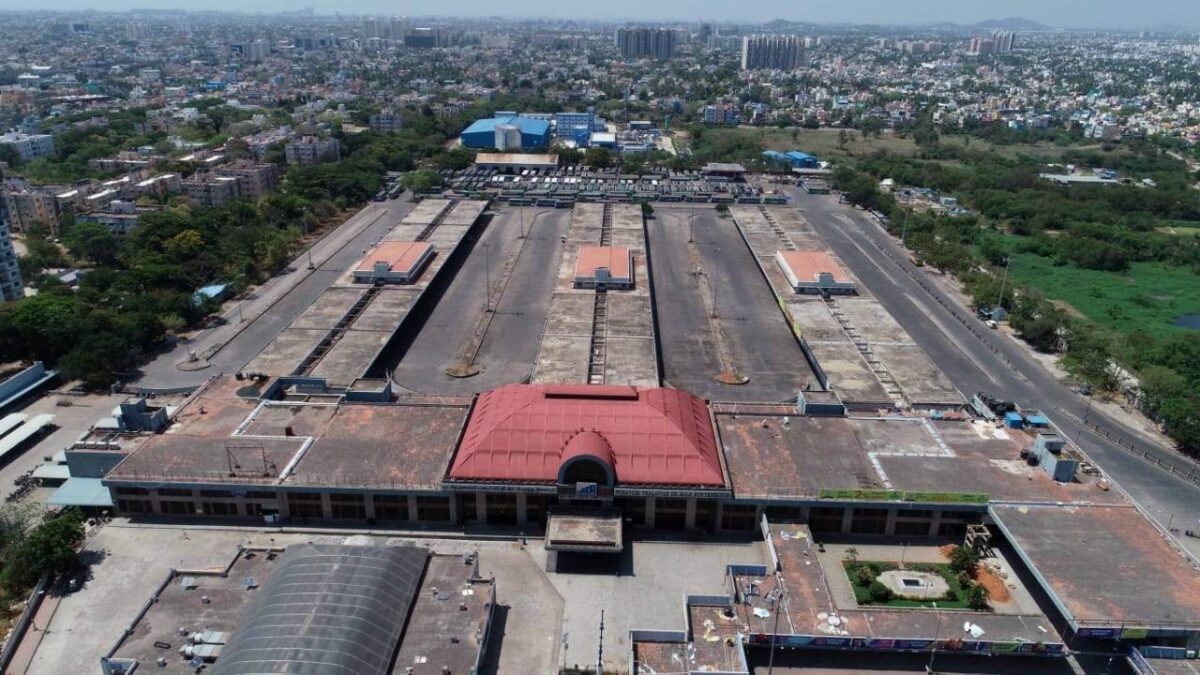

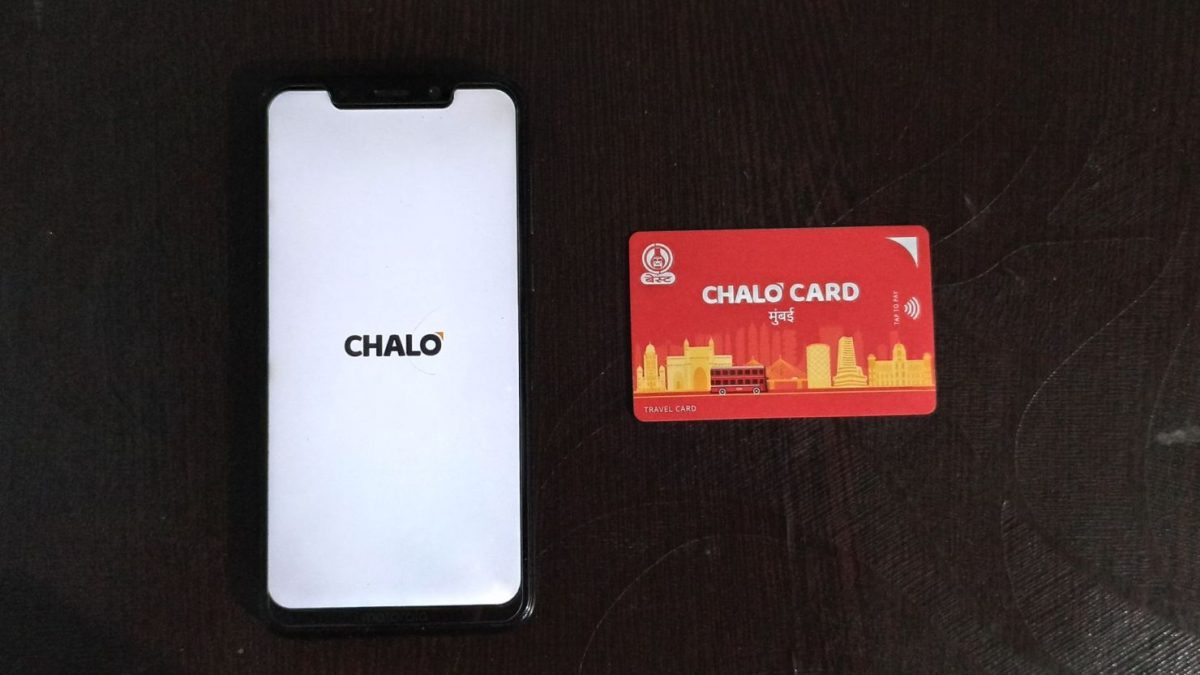
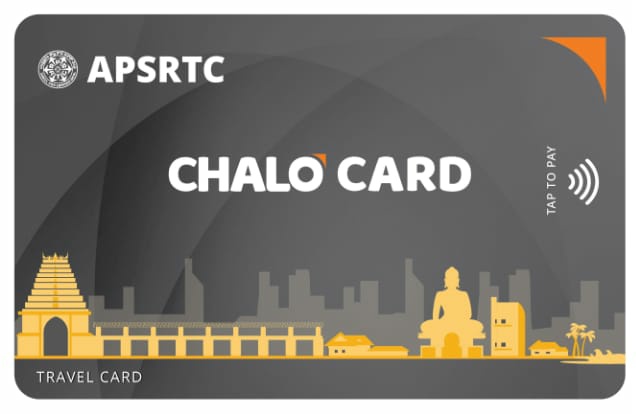
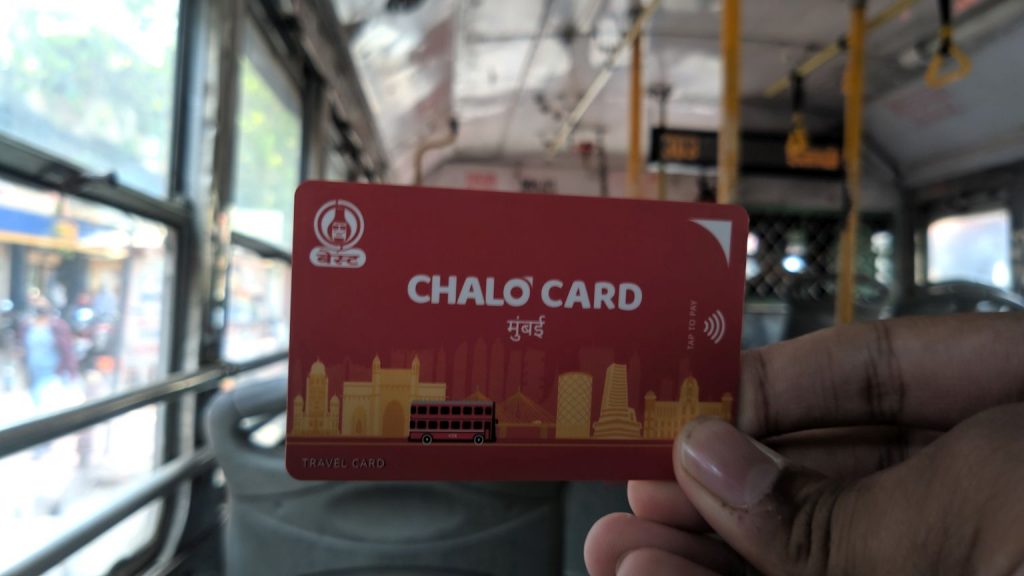







![An MTC Small Bus [Mini Bus].](http://www.thehindu.com/multimedia/dynamic/02108/Mini_Bus_TH_2108183f.jpg)
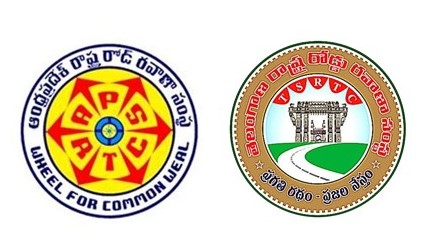
![Logo of the Jawaharlal Nehru National Urban Renewal Mission [JnNURM].](https://upload.wikimedia.org/wikipedia/commons/1/1c/JnNURM_logo.jpg)


